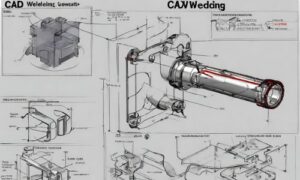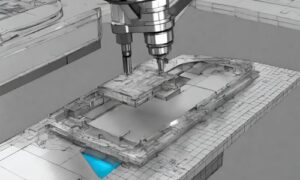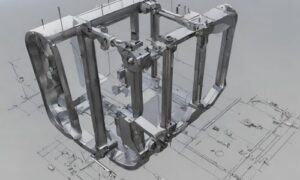Table of Contents
- What is CAD welding
- The History of CAD Welding
- The Process of CAD Welding
- Materials Used in CAD Welding
- Applications of CAD Welding
- Benefits of CAD Welding
- Safety Measures in CAD Welding
- CAD Welding vs. Traditional Welding
- Equipment and Tools for CAD Welding
- Challenges Faced in CAD Welding
- Environmental Impact of CAD Welding
- Training and Certification for CAD Welders
- Case Studies: Real-World Applications
- Future Trends in CAD Welding
- What is a CAD weld made of?
- Is CAD welding hot work?
- Conclusion
- FAQs
In welding, there are many different methods, each with its own specific uses. One of these less-known but very effective techniques is CAD welding. In this article, we will explore what is CAD welding , how it works, where it’s used, and why it’s important in the welding industry. By the end of this article, you’ll have a good understanding of CAD welding.
What is CAD welding
CAD welding, also known as Capacitor Discharge Stud welding is a super-effective and accurate way to connect metal parts. It works by using electricity stored in capacitors to make a really strong link between the stud and the workpiece. People like CAD welding because it’s fast, precise, and can be used in many different situations.
The History of CAD Welding
To really get what CAD welding is, we need to look back in time. This cool way of welding was first made in the middle of the 20th century and is now used in lots of industries like building stuff, making things, and electronics.
The Process of CAD Welding
The CAD welding process involves several crucial steps:
- Preparation: Clean the conductive materials and molds.
- Ignition: An exothermic reaction is initiated, melting the powdered metals.
- Welding: Molten metal is poured into the mold, creating a connection.
- Cooling: Allow the mold to cool before removing it.
Materials Used in CAD Welding
CAD welding relies on high-quality materials, such as copper alloys, to ensure a durable and low-resistance connection. These materials are specifically designed for exothermic welding applications.
Applications of CAD Welding
CAD welding finds extensive use in various industries, including:
- Electrical grounding systems
- Cathodic protection systems
- Lightning protection systems
- Telecommunications
- Oil and gas pipelines
Benefits of CAD Welding
The advantages of CAD welding are numerous, including:
- Exceptional electrical conductivity
- Long-lasting connections
- Resistance to corrosion and environmental factors
- Low maintenance requirements
Safety Measures in CAD Welding
Safety in CAD welding is of utmost importance. It means wearing the right protective gear and following safety rules to avoid accidents and injuries.
CAD Welding vs. Traditional Welding
CAD welding offers distinct advantages over traditional welding methods, such as minimal heat-affected zones, quicker execution, and consistent quality.
Equipment and Tools for CAD Welding
Specialized equipment, including CAD welding molds, ignition kits, and protective gear, is required to perform CAD welding.
Challenges Faced in CAD Welding
CAD welding does have its challenges, including the need for specialized training and the cost of equipment.
Environmental Impact of CAD Welding
CAD welding is considered an environmentally friendly option due to its low energy consumption and minimal emissions.
Training and Certification for CAD Welders
To become a proficient CAD welder, individuals need specialized training and certification to ensure the highest quality connections.
Case Studies: Real-World Applications
Explore real-world examples of CAD welding applications, showcasing their efficacy and benefits in different industries.
Future Trends in CAD Welding
As technology advances, CAD welding is likely to see further improvements and expanded applications in various sectors.
What is a CAD weld made of?
A CAD weld, often referred to as a CAD weld connection, is made of a unique blend of powdered metals and other materials. The exact composition of the Cad weld material may vary depending on the specific application and requirements. Common components of Cadweld materials include copper, tin, and other alloys that can create a robust and long-lasting bond. These materials are carefully mixed to ensure a consistent and reliable connection.
Is CAD welding hot work?
Yes, CAD welding involves hot work. During the Cadweld process, an exothermic reaction generates intense heat to melt the Cadweld material and fuse it with the conductive materials. This high temperature is necessary to create a strong and reliable connection. It’s essential to follow proper safety procedures when performing CAD welding to prevent accidents and injuries.
Conclusion
CAD welding is a remarkable and highly efficient welding method that plays a crucial role in electrical grounding, cathodic protection, and more. Its ability to create low-resistance, long-lasting connections makes it an invaluable asset in industries where reliability is paramount. As the world of welding continues to evolve, CAD welding stands as a testament to innovation and precision.
FAQs
Is CAD welding similar to traditional welding methods?
CAD welding is a form of exothermic welding and differs significantly from traditional fusion welding methods.
What materials are commonly used in CAD welding?
CAD welding primarily uses copper alloys for its connections.
What safety precautions are essential in CAD welding?
Safety measures include wearing protective gear and following established guidelines to prevent accidents.
What industries benefit the most from CAD welding?
CAD welding finds applications in electrical grounding, cathodic protection, lightning protection, telecommunications, and oil and gas pipelines.
How can one become a certified CAD welder?
Specialized training and certification programs are available for those interested in becoming proficient in CAD welding techniques.



